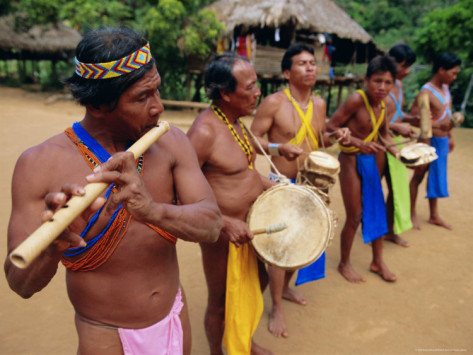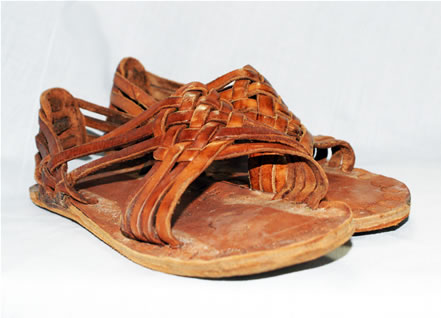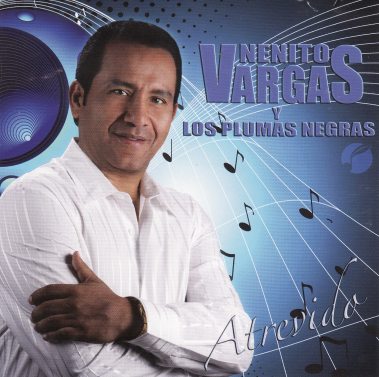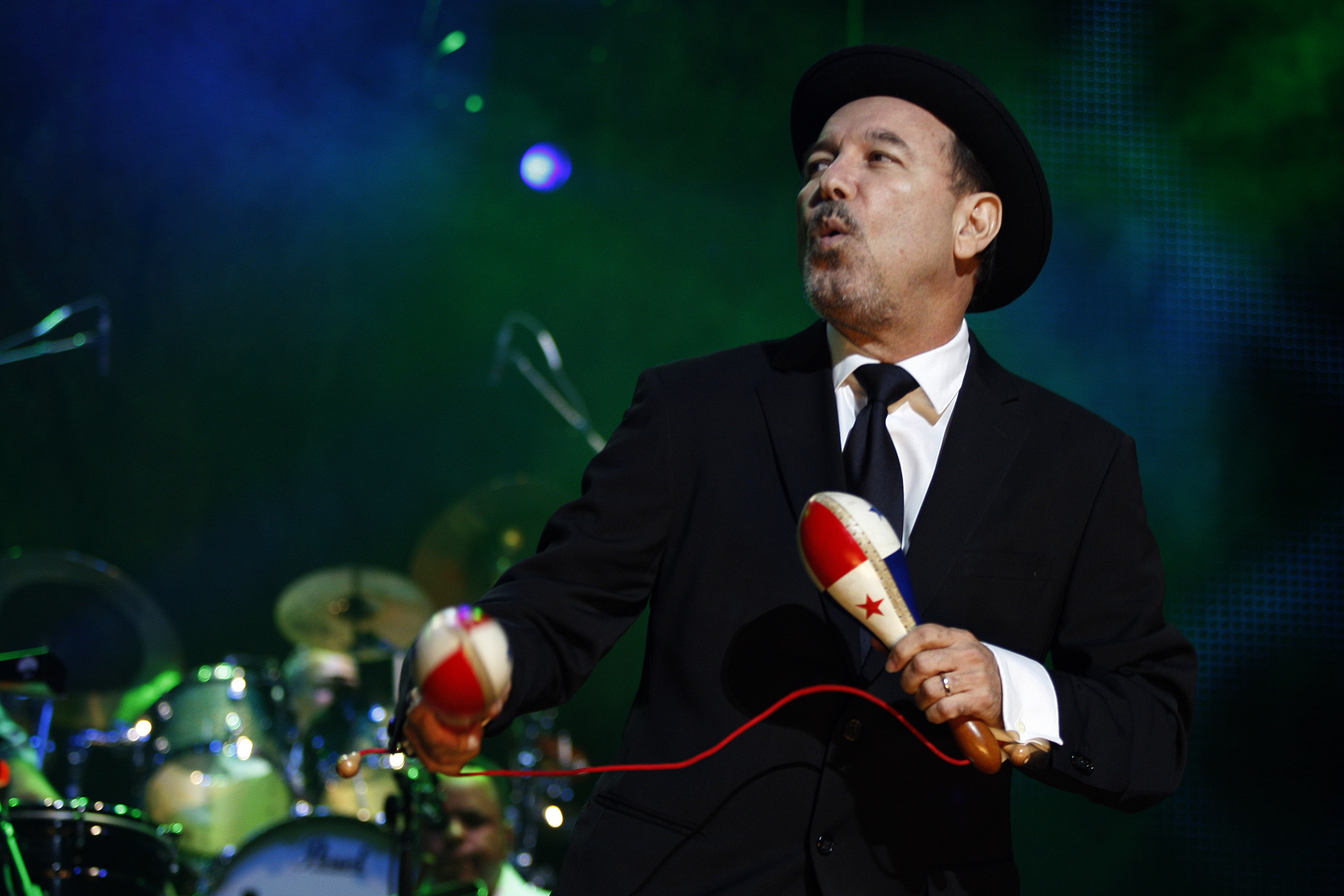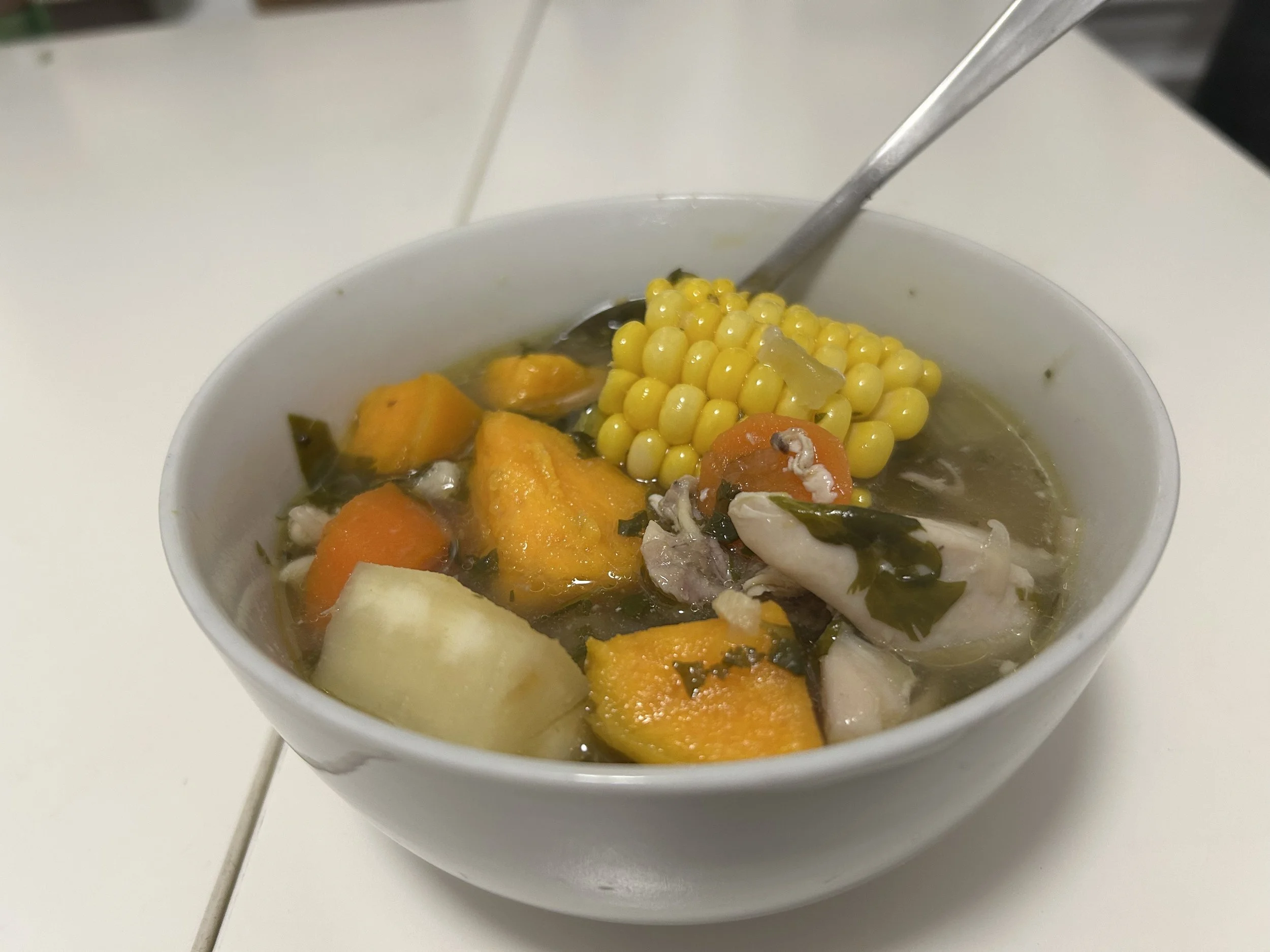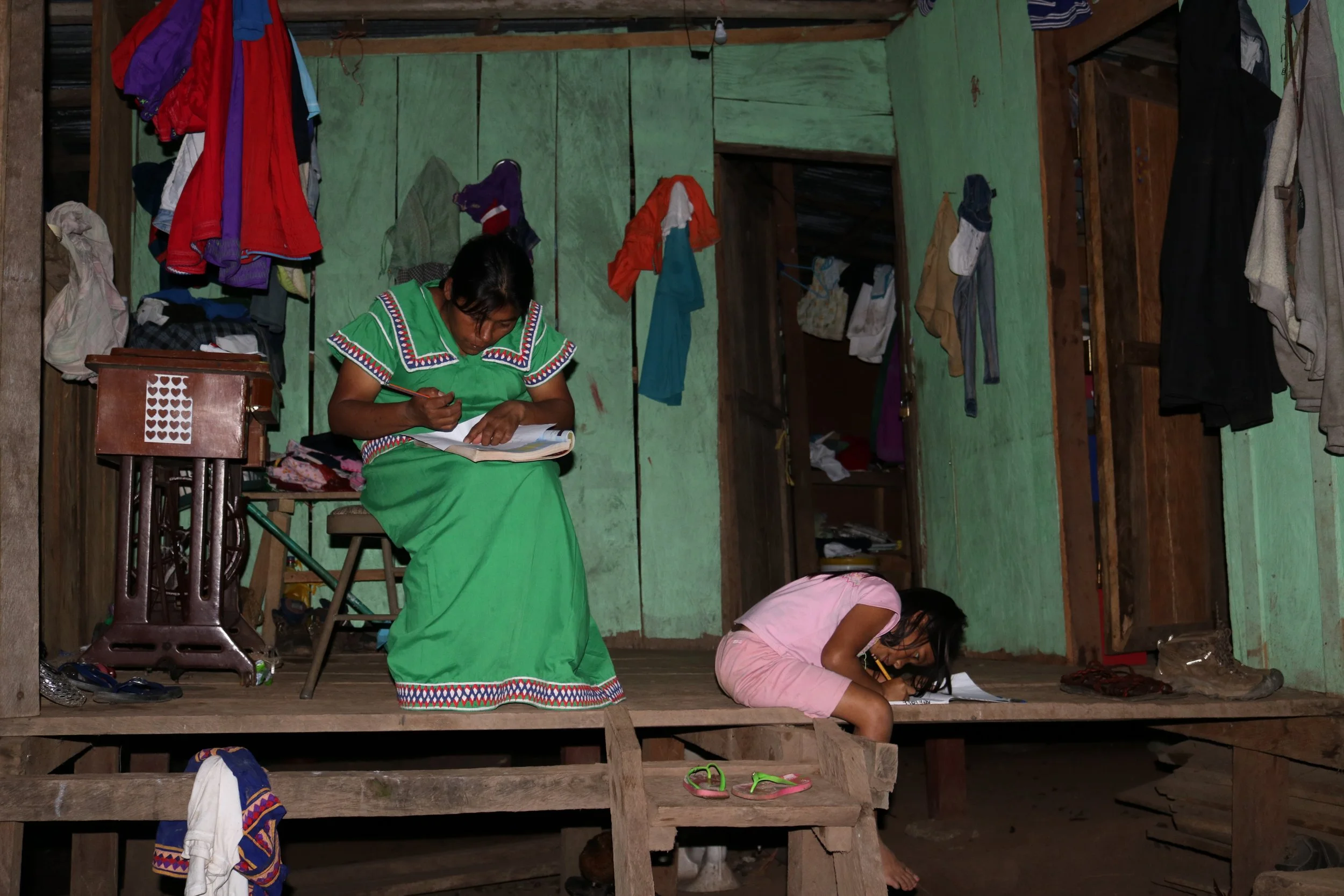What cultural blog isn’t complete without a musical post? I have to say, attempting to cram all of my favorite Panamanian music into one blog post is a little daunting. I may just have to write a second installment for all the great tunes I can’t fit into this post.
The music of Panama is as diverse as its people--mestizos, blacks, Chinese, Ngöbe-Buglé, Emberá Wounaan, Kuna, Naso Teribe-- and the foreign cultures that have played a role in the country’s history--Spanish, Caribbean, African and American influences. Whether it’s salsa, merengue, cumbia, plena, saloma, tamborito, mejorana, reggae, típico (folklórico), reggaeton, or la murga, Panama boasts incredibly talented musicians and a rich musical history. Carnavales, the largest festival of the year is a smorgasbord of all of these different genres. During the day, more traditional tamborito, típico, and la murga is heard throughout the streets. As it transitions to night, the sounds of salsa, merengue, cumbia, plena, and reggaeton take over in the dance halls.
Let’s start with more traditional music...tamborito. Tamborito literally means ‘little drum’ and usually features women (called empollerada) dancing in traditional dresses called polleras with men (called montuno) dancing in traditional sombreros. In this video, you can also hear salomas, the style of yelling/singing that developed in the countryside as neighbors communicated by yelling to each other hilltop to hilltop. My favorite part in this video is the male dancer on the right who slides his feet back and forth quickly wearing traditional leather sandals called cutarras.
I own about 3 pairs of these sandals and would wear them around Panama City when running errands much to the chagrin of my city friends who couldn’t understand why I would wear campesino shoes!
Sticking with the more traditional music of Panama, típico or pindín, is one of the most popular genres of music; radio stations and taxi drives play típico hits non stop until every word is permanently imprinted on your brain. One of the most highly regarded players is Ulpiano Vergara. This music is characterized by a good helping of accordion and the lyrics generally tell a story of a love lost, love found, or traitorous loves...you get the idea. For example, Ulpiano’s "Corazon Malvado" (Evil Heart):
One of the most entertaining live típico duos is brother and sister team Samy y Sandra Sandoval. Sandra is best known for her provocative dance moves, incredible energy, and fascination with plastic surgery. I think "La Barredora" (The Sweeper - think woman with a broom) is one of their best songs:
You can’t talk about típico music without mentioning Nenito Vargas y Los Plumas Negras. They have so many hits I don’t know where to start. If you saw my last blog post you’ll remember this track; it is by far my favorite since the story takes place along the banks of the Mamoni River where I lived. Here it is again, you really can’t see it too many times. I just love the coordinated outfits and swaying. "Una Noche en el Rio" (One Night on the River) features the saloma style of singing, amazing accordion, and the churuca.
Salsa. Ay Salsa. I literally can not sit still when I hear salsa music. At the summer FFC retreat we had a mini salsa dance in the kitchen while making the hojaldres featured previously. I think that’s why they turned out so great...extra sabor! Ruben Blades is the legendary salsero from Panama, probably the most famous Panamanian besides Manuel Noriega and Mariano Rivera of Yankees fame.
Blades has collaborated with international stars such as Willie Colon, Celia Cruz, and Cheo Feliciano during his illustrious career. He is revered for being a great story teller; the lyrics of his salsas tell stories that touch people across borders. One of his most popular hits is “Patria” (Homeland) that stirs nationalist fervor both in Panamanians as well as in people of other nationalities. One of his best story-telling salsas is Pedro Navaja. The lyrics talk about how life is full of surprises and recounts the story of Pedro Navaja who gets what is coming to him as he walks in his long trench coat and the woman he crossed stalks him with a revolver. One of the best lines is “como decia mi abuelita, quien de último rie, se rie mejor.” “As my grandmother said, he who laughs last, laughs best.”
Now, going in a completely different direction, reggaeton. Although Puerto Rico likes to claim reggaeton as their own due to the popularity of Daddy Yankee and others, reggaeton actually got its start as Reggae en Español or “Spanish Reggae.” Reggae was brought to Panama by the Jamaicans who came to build the Panama Canal. From its beginnings as a combination of reggae and rap in Spanish, the musical style gained popularity in Puerto Rico and morphed into the reggaeton we hear today on the radio. However, the Father of Reggae en Español is El General (The General) from Panama. One of his signature songs, “Rica y Apretadita,” was released in 1995 and the music video features tanks, generals, marching armies, and scantily clad women. (This music video should probably come with a PG-13 warning)
Currently, plena has taken over the radio and minds of the youth in Panama. Similar to the themes of típico songs, plena songs follow the general lines of love lost, love found, broken hearts, and cheating exes but with modern backdrops of fancy cars, mansions, and hot girls. Whereas típico songs focus on the trials of life as a modest campesino (someone who lives in the countryside and works the land), plena features the riches of life in Panama City; however, both cite the same life trials and tribulations. One of the most popular plena songs that I’ve heard non stop on the radio in Panama since 2007 (it has over 37million views on YouTube!) is “Perdoname” or “Forgive me” by La Factoria featuring Eddy Lover. The lyrics explain the premise:
"Mami yo se que no estas bien - Mami I know you're not well y piensas que ya te deje de querer - and you think that I stopped loving you estas equivocada - you're wrong yo lo se que falle - I know I messed up por que fui infiel la noche de ayer - because I cheated last night siempre me arrepentire - I will always regret y de rodillas te pido mujer - and on my knees I beg you woman
Que si alguna vez sentiste algo lindo por mi - If you ever felt something for me perdoname perdoname - Forgive me Forgive me Que si alguna vez sentiste algo lindo por mi - If you ever felt something for me perdoname perdoname bebe - Forgive me Forgive me baby”
The ladies of La Factoria definitely give Eddy Lover quite an ear full.
Another plena artist, Makano, has gained fame both in Central America and the States. Te Amo (I love you) was the title of his first album, released in 2008, reaching Gold sales in US and Platinum for digital downloads in Central America. The music video for Te Amo has over 28,500,000 views on YouTube! I really enjoy all the scenes of Panama City in this music video as he’s chasing his girl around through the former American Canal Zone. The song begins:
"Ella todavía me llama - she still calls me, yo no tengo la culpa - it’s not my fault, que no me ha olvidado - she hasn’t forgotten me, espera por favor no te vayas - wait, please don’t go, analiza y escucha lo que tengo que decir - analyze and listen to what I have to say...” If I had a dollar for everytime I heard Te Amo I would be able to pay off my school loans.
Last but not least for plena artists, DJ Flex (Nigga). This artist, known internationally as DJ Flex has started many an interesting conversation for me in Panama. In Panama he goes by the name Nigga, and I’ve had many a conversation with Panamanians about the history of that word in the US and why when he tours in the States he goes by the stage name DJ Flex. I really like the music video to the song, "Dime si te vas con él" (Tell me if you’re going with him) because it shows the current clash between the modern city/Americanized culture and the rural machete-wielding-sugar-cane-harvesting campesinos. In 2009, DJ Flex beat out Enrique Iglesias for the Hot Latin Song of the Year by a male artist.
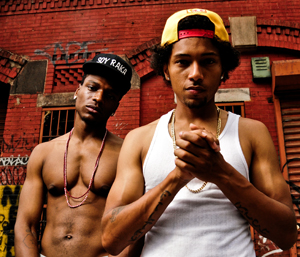 To close out this first edition of the music of Panama, I go to Los Rakas. Panamanian cousins Raka Dun and Raka Rich are originally from Panama but now live in the Bay Area and make music that falls somewhere in the Latin Urban Music/hip hop/reggae-rap flow. I’ve totally fallen in love with this group and their ability to flow between English and Panamanian Spanish and back so seamlessly. Their name, Los Rakas, comes from the Panamanian word “Rakataka” which is a derogatory word that refers to someone from the ghetto. Their lyrics are really powerful, on the track “Sueño Americano” they show the sharp contrast between the idealized idea of the American Dream with the reality that many recent immigrants receive when they arrive in this country and feel that they are perceived as criminals. One part goes:
To close out this first edition of the music of Panama, I go to Los Rakas. Panamanian cousins Raka Dun and Raka Rich are originally from Panama but now live in the Bay Area and make music that falls somewhere in the Latin Urban Music/hip hop/reggae-rap flow. I’ve totally fallen in love with this group and their ability to flow between English and Panamanian Spanish and back so seamlessly. Their name, Los Rakas, comes from the Panamanian word “Rakataka” which is a derogatory word that refers to someone from the ghetto. Their lyrics are really powerful, on the track “Sueño Americano” they show the sharp contrast between the idealized idea of the American Dream with the reality that many recent immigrants receive when they arrive in this country and feel that they are perceived as criminals. One part goes:
"yo soy inmigrante y se me trata a mi, como si soy maliante - I am an immigrant and they treat me as if I am a thug la circunstancia me limita - circumstances limit me no puedo ir pa’ college - I can’t go to college por que no tengo mi green car’ - Because I dont’ have a green card ando sin trabajo y la mente negativa - I go around without work and a negative mind tramando lo que sea para llegar hacia la cima - Plotting whatever so I can reach the top tu me entiendes - You understand me ya no soy el mismo joven inocente - I’m not the same innocent young guy América me convirtió en delincuente - American converted me into a delinquent” Los Rakas are making headway in the Bay Area scene and nationally. They played the SXSW Music Festival both in 2012 and 2011, won the Latin Alternative Music Conference’s Discovery Artist prize, and have been covered in the NYTimes. I’m looking forward to hearing more of their socially conscious English/Spanish flow!


